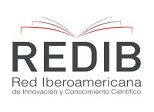Neuronal Process for Analysis of Partial Discharges in the company CORPOELEC, of Ciudad Guayana, Venezuela
DOI:
https://doi.org/10.69890/hallazgos21.v3i2.279Keywords:
classification; partial discharge; neural network; typologies.Abstract
The rotating machines used in the industry tend to have failures in the insulation caused by lack of maintenance and lack of knowledge of their condition. It is important to carry out periodic tests and continuous evaluations of the state of the insulation to guarantee the correct functioning of the machines. One of the methods used for the detection of these faults is Partial Discharges, which consist of small discharges produced in a portion of gas that is dissolved in the oil or dielectric that constitutes the insulation of electrical machines. This article presents the Analysis of Partial Discharges by means of a neuronal processing of the different types of discharges found in the high power transformers of the Electrical Department of National Electric Corporation, SA (Corpoelec) in the City of Puerto Ordaz, Venezuela. In this research work techniques based on an artificial neural algorithm were developed that allowed analyzing the own and individual characteristics of each partial discharge present in the electricity supply transformers of the Corpoelec company, and establishing the contrasts of one discharge with respect to the other . In addition, the techniques developed proved to be multi-classifying because they allow to classify and analyze various data sources, regardless of their nature. The simulations carried out in the research center of Corpoelec allowed to evaluate the partial discharges using their weight matrix; being possible its analysis from the individual typologies.
References
Bapt, J., Bui-Ai, A., Mayoux, C. (1978) Corona frecuency analysis in artificial cavities in epoxy resins. Annual Report, Conference on Electrical Insulation and Dielectric Phenomena. 403-407
Bartnikas, R. (2002) Partial Discharges. Their Mechanism, Detection and Measurement. IEEE Transactions on Dielectrics and Electrical Insulation, 9(5), 763-808
Boggs S., Stone G. (1983) Fundamental Limitations in the Measurement of Corona and Partial Discharge, IEEE Transactions E-17. Nº2, 143-150.
Carvajal, A. García, A., Asaín, V. (2008). Diagnóstico en línea de motores de gran capacidad mediante la detección de descargas parciales utilizando técnicas de banda ultra ancha. Rev. información tecnológica, 19 (1), 75-86
Danikas, M. y Karlis, A. (2006) Diagnostic Techniques in Rotating Machine Insulation: A Diagnostic Technique for Model Stator Bars Based on Maximum Partial Discharge Magnitude, Electric Power Components and Systems 34. Taylor and Francis Group, 905-916
Gao, K., Tan, K., Li, F. y Wu, C. (2002) PD Pattern Recognition for Stator Bar Models with Six Kinds of Characteristic Vectors Using BP Network. IEEE Transactions on Dielectrics and Electrical Insulation, 9(3), 381-389
Grimón, Y.(2011). Algoritmo de clasificación de imágenes usando redes neuronales”. Trabajo Especial de Grado, Unexpo
Kurtz, L., Lyles, M., Stone, G. (1995) Aplication of PD testing to hydrogenerator maintenance. IEEE transactions on Power Apparatus Systems, 103, 2148-2157.
Magrashi, A. (1997). Pattern recognition of partial discharges using matlab tolos. Sultan Qaboos University, Oman.
Martínez-Tarifa, J., Robles, G., Rojas-Moreno y Sanz-Feito, J. (2010) Partial discharge pulse shape recognition using an inductive loop sensor. Measurement Science and Technology, 21(10), 105-116.
Pedersen, A., Crichton, S., McAllister, C. (1995) The functional relation between partial discharges and induced charge. IEEE transactions on dielectrics and electrical insulation, 2 (4), 535-543
Rojas, M., Robles, G (2011). Sensor de acoplamiento inductivo para la medida de pulsos de corriente de alta frecuencia; aplicación para la medida y detección de descargas parciales. Repositorio Universidad Carlos III de Madrid.
Torres, W., Dorbercker, S y Benítez, I. (2010). Variable para la supervisión del envejecimiento del aislamiento principal de grandes hidrogeneradores mediante descargas parciales. Rev. UCT,14 (56).
Downloads
Published
How to Cite
Issue
Section
License
Los artículos enviados a la Revista Científica Hallazgos21 deberán ser totalmente originales e inéditos.
Los autores son los responsables de los textos y las imágenes incluidas en los artículos y no necesariamente reflejan el pensamiento de la editorial o de la Pontificia Universidad Católica del Ecuador, Sede Esmeraldas (PUCESE).
Los autores disponen cederle a la Revista Científica Hallazgos21 todos los derechos inherentes para la edición, publicación y distribución o divulgación del mismo.
Se autoriza a las revistas firmantes de los acuerdos de Encuentros de Revistas Latinoamericanas para reproducir en parte o totalmente los artículos con la sola mención de la fuente claramente señalada.







